What Is Taro and How Do You Use It?
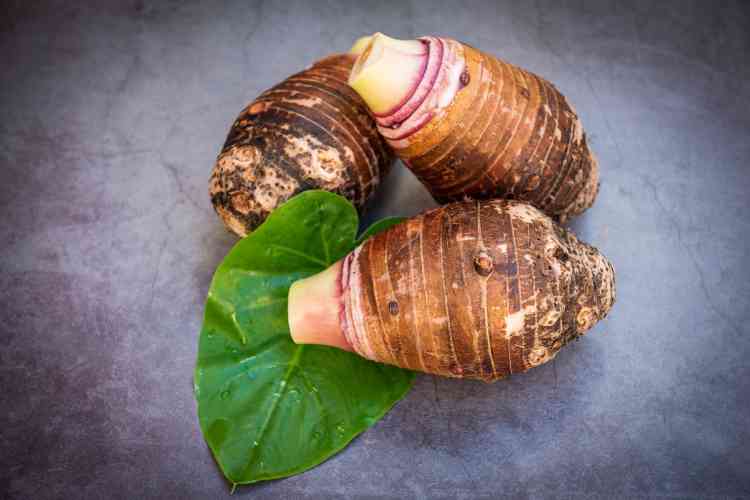
Home chefs who love to experiment with new ingredients may want to check out taro, but there are a few key things to know before you get cooking. Taro is a starchy root vegetable with origins in Southeast Asia. It looks a little bit like a turnip and it’s surprisingly versatile, with similar culinary uses as potatoes. Taro is also the key ingredient in several distinctive foods, such as milk tea and Hawaiian poi.
If you want to find out a little more about this unique vegetable, this guide is the perfect place to start. From answering the question “What is taro?” to uncovering if it’s potentially toxic, keep reading to discover everything you need to know about taro and its many uses.
Jump to Section
- What Is Taro?
- What Does Taro Taste Like?
- What Is Taro Milk Tea?
- How To Cook Taro
- Is Taro Good for You?
- Is Taro Gluten-Free?
- Where To Buy Taro Root
What Is Taro?
Taro is a type of root vegetable similar to a potato and often used as a potato substitute. Taro is considered a corm, which is a plant that grows underground and reproduces itself by generating new bulbs from the original plant. One of the reasons taro is such a widely used crop in Asian and Caribbean countries is because it is inexpensive to produce and doesn’t require reseeding. Taro can also grow in extreme conditions which makes it a less risky crop than others for farmers.
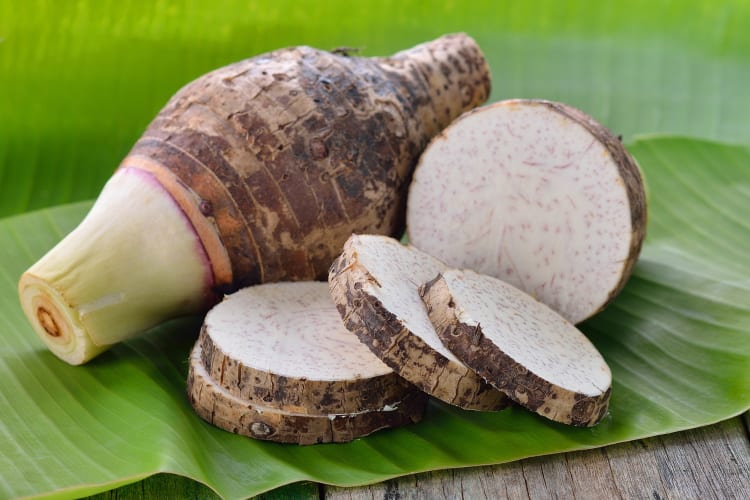
What Does Taro Look Like?
Taro looks similar to a turnip. It’s a medium-sized root vegetable with rough brown skin. Once you cut it open, it is pale-colored inside and often has purple speckles. There are some less common varieties that are red, yellow or green. Both the leaves and husk of the raw taro plant are considered toxic, so learning how to handle and cook it properly is important.
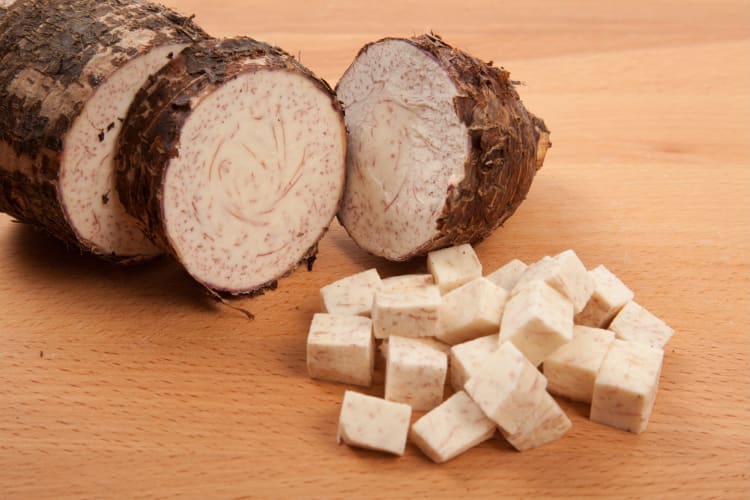
Where Is Taro From?
The taro plant was originally found in Southeast Asia where it flourished in warm climates. Today, taro is grown all around the world. Because it is a relatively easy and inexpensive crop to grow, taro has become a staple food in Caribbean and African countries.
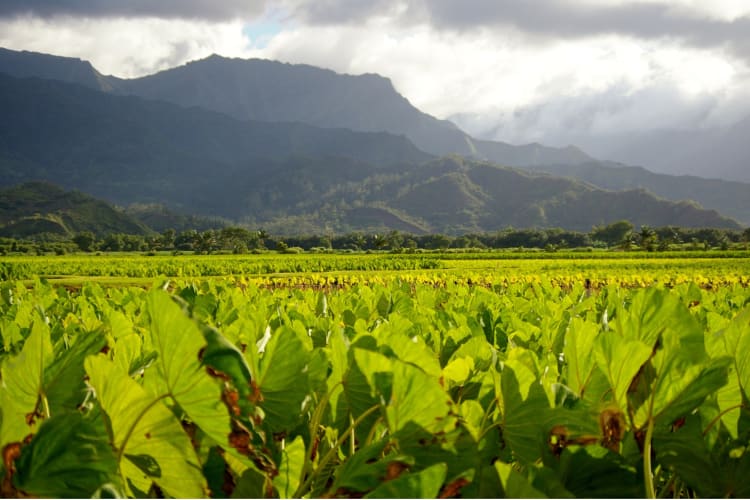
Are Ube and Taro the Same?
If you’re familiar with Filipino food, you may have cooked with ube. Ube is a very similar root vegetable compared to taro, but they are not the same thing. Ube and taro look very similar (ube is purple in color when cut open) but ube has a higher sugar content, so it is more commonly used in desserts than as a substitute for potato.
What Does Taro Taste Like?
Taro must be cooked before it can be eaten. Think of taro as a substitute for potato. It’s starchy and pale in color like a white potato, but tastes more nutty and slightly sweet like a sweet potato.
What Is Taro Milk Tea?
Taro milk tea is a popular beverage originating from Taiwan, which has gained widespread popularity globally. It is made from taro root, a starchy tuber with a naturally sweet and nutty flavor. The root is typically cooked and then blended into a creamy paste, which is combined with milk (often non-dairy alternatives like almond milk or coconut milk) and sweetened with sugar or syrup. The result is a rich, creamy, and subtly sweet beverage with a unique purple hue, that occurs thanks to the natural color of the taro root.
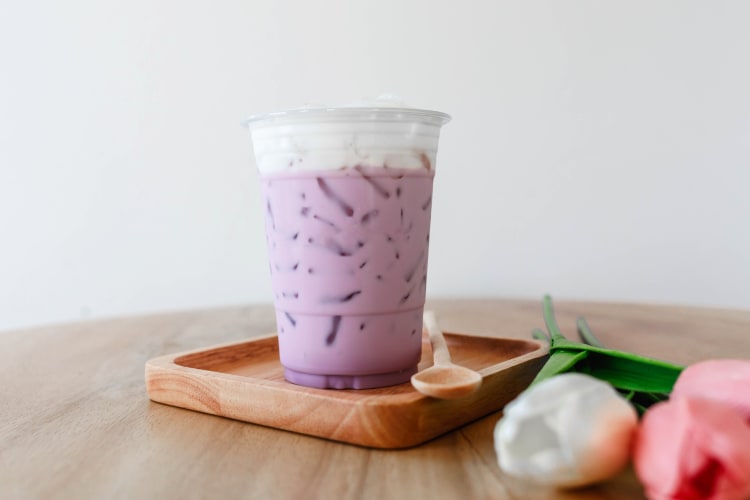
What Does Taro Milk Tea Taste Like?
Taro milk tea has a distinctive flavor profile characterized by the sweet and nutty taste of taro root. It's often described as having a creamy and slightly earthy flavor, with hints of vanilla and a touch of sweetness from the added sugar or syrup. The texture is typically smooth and velvety due to the milk or non-dairy alternative used in the preparation. Overall, it offers a comforting and indulgent drinking experience that appeals to those who enjoy creamy and subtly sweet beverages.
What Is Taro Bubble Tea?
Bubble tea or taro bubble tea is just a taro milk tea that also has tapioca pearls (boba) in it. The boba adds texture and sometimes additional flavor to a taro milk tea.
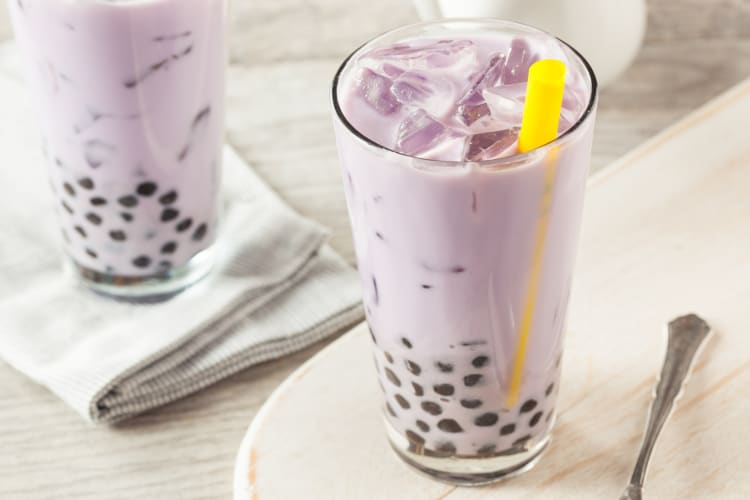
How To Make Taro Milk Tea
Taro milk tea takes a few steps. First, you have to cut and cook the taro root itself and mash it into a paste to turn it into a smooth consistency. Then, heat milk (or a plant-based milk) in a saucepan and mix in the taro paste until well combined. Sweeten the mixture with sugar or syrup according to your taste preferences. Serve the taro milk tea hot or cold, optionally adding tapioca pearls for a bubble tea variation. Adjust the proportions of ingredients to achieve your desired flavor and consistency.
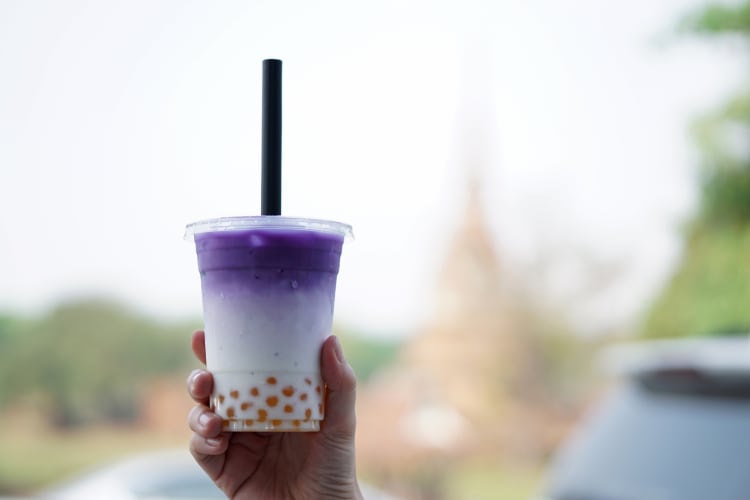
Does Taro Have Caffeine?
Taro is naturally caffeine-free, so unless it is mixed with actual tea or coffee it would be considered a caffeine-free beverage. You might get a jolt from taro milk tea, but that’s a result of the sugars and not caffeine.
How To Cook Taro
Taro can be prepared in many ways just as you would do with a potato. It can be boiled, steamed, fried or roasted. The most important thing to know is that the skin of a taro plant is toxic. It contains a compound called calcium oxalate that can cause burning and itching on the skin, so you should handle taro with gloves while preparing it. If you want to learn more about cooking with taro, consider looking into cooking classes near you. Classes on Asian cuisines, like Filipino cooking classes, are likely to have sessions featuring taro.
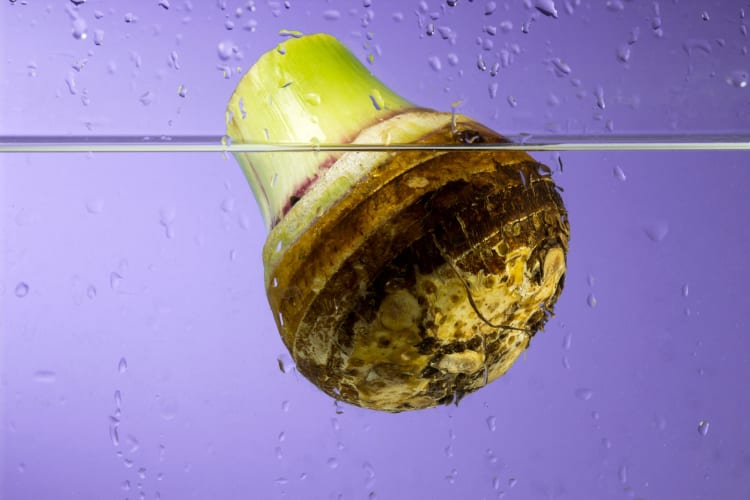
Is Taro Good for You?
In general, taro is a good source of nutrition. It has a high fiber content and is high in good carbohydrates. Taro also has a high amount of vitamins A, B12 and E. A one-cup portion of taro has about 190 calories, seven grams of fiber and 39 grams of carbohydrates.

Is Taro Gluten-Free?
Taro does not contain gluten, so it makes a great option for starch if you are on a gluten-free diet.
Where To Buy Taro Root
You’ll find taro in the produce section of some grocery stores, though it is more commonly found in specialty Asian markets and other markets with international produce.
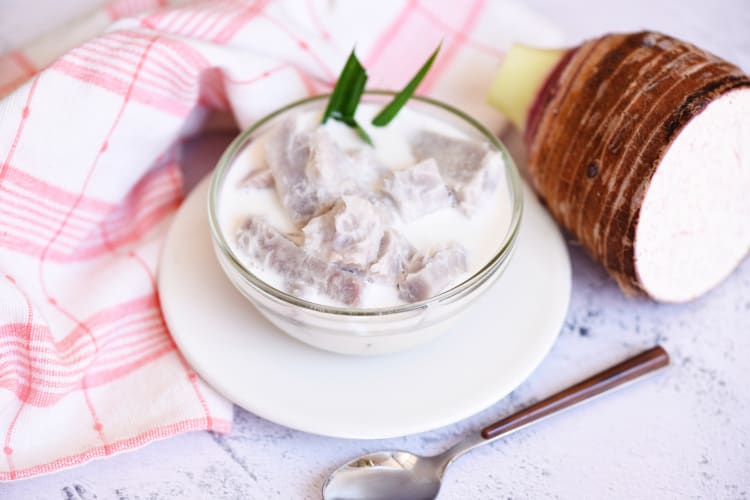
It’s good to switch things up in the kitchen now and then, so if you are a potato lover, you might want to give taro a try. Be sure to handle it with care and remove the skin before cooking. From there, making taro is just as easy as making your favorite style of potato. Boil it, mash it, fry it or roast it, and enjoy this nuttier, sweeter starch option for your dinner plate.
For even more ways to explore your favorite foods, check out other experiences happening on Cozymeal.



FOOD FOR THOUGHT?
Join the conversation.